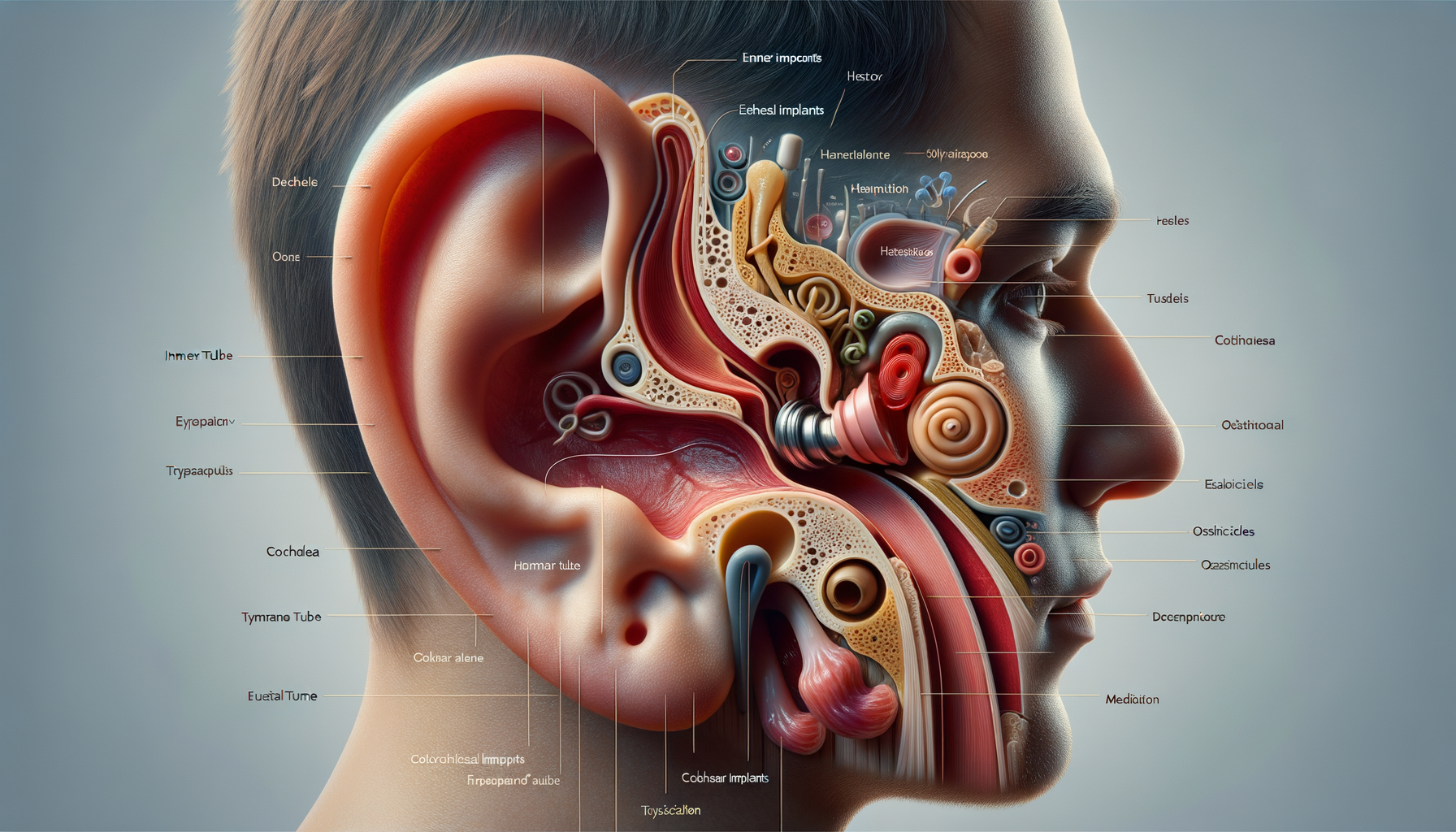Understanding Ear Disorders: A Comprehensive Overview
The human ear is a complex organ responsible for hearing and balance, and any disorder affecting its function can lead to significant challenges in daily life. Ear disorders range from temporary issues like ear infections to chronic conditions such as tinnitus or Meniere’s disease. Understanding these disorders is crucial as they can significantly impact quality of life, affecting both hearing and balance. In this article, we will explore various ear disorders, their causes, symptoms, and the treatment options available. By gaining insights into these aspects, individuals can better manage their conditions and seek appropriate medical attention when necessary.
Common Types of Ear Disorders
Ear disorders can be broadly categorized into three main types: outer ear disorders, middle ear disorders, and inner ear disorders. Each type has distinct causes and symptoms:
- Outer Ear Disorders: These include conditions like swimmer’s ear, which is an infection of the outer ear canal. It is often caused by water remaining in the ear after swimming, creating a moist environment for bacteria to grow.
- Middle Ear Disorders: Common middle ear disorders include otitis media, an infection or inflammation of the middle ear, often seen in children. This condition can cause ear pain, fever, and temporary hearing loss.
- Inner Ear Disorders: Inner ear disorders are more complex and include conditions such as Meniere’s disease, which affects balance and hearing. Symptoms include vertigo, tinnitus, and fluctuating hearing loss.
Each of these disorders requires specific diagnostic approaches and treatment plans, highlighting the importance of professional evaluation and care.
Diagnosis and Evaluation of Ear Disorders
Accurate diagnosis of ear disorders is essential for effective treatment. Healthcare professionals use a combination of medical history, physical examination, and specialized tests to diagnose ear conditions. Some common diagnostic methods include:
- Otoscopy: This involves examining the ear canal and eardrum using an otoscope to identify any visible signs of infection or abnormality.
- Audiometry: Hearing tests are conducted to assess the extent of hearing loss and determine the type of hearing impairment.
- Imaging Tests: In certain cases, imaging tests like CT scans or MRIs may be required to visualize the inner ear structures and identify any underlying issues.
Through these diagnostic tools, healthcare providers can accurately identify the type and severity of the ear disorder, guiding them in developing an appropriate treatment plan.
Treatment Options for Ear Disorders
Treatment for ear disorders varies depending on the type and severity of the condition. Here are some common treatment approaches:
- Medications: Antibiotics or antifungal medications are often prescribed for infections, while anti-inflammatory drugs can help reduce swelling and pain.
- Hearing Aids: For individuals with hearing loss, hearing aids can significantly improve hearing ability and quality of life.
- Surgical Interventions: In some cases, surgery may be necessary to correct structural issues or remove blockages in the ear.
- Lifestyle Modifications: Avoiding loud noises, managing stress, and maintaining a healthy diet can help manage symptoms of certain ear disorders like tinnitus.
It is essential for individuals to work closely with their healthcare providers to determine the most suitable treatment plan for their specific condition.
Living with Ear Disorders: Tips and Strategies
Living with an ear disorder can be challenging, but with the right strategies, individuals can manage their symptoms and maintain a good quality of life. Here are some tips:
- Regular Check-ups: Regular visits to an audiologist or ENT specialist can help monitor the condition and adjust treatment plans as needed.
- Protect Your Ears: Use ear protection in noisy environments to prevent further damage to your ears.
- Stay Informed: Educate yourself about your condition to better understand and manage it effectively.
- Support Networks: Joining support groups can provide emotional support and practical advice from others with similar experiences.
By adopting these strategies, individuals with ear disorders can lead fulfilling lives while effectively managing their symptoms.
Conclusion: Navigating Life with Ear Disorders
Ear disorders, though challenging, can be managed effectively with the right diagnosis, treatment, and lifestyle adjustments. By understanding the nature of these disorders and working closely with healthcare professionals, individuals can find relief from symptoms and improve their quality of life. Whether through medical interventions, hearing aids, or lifestyle changes, there are numerous ways to address the challenges posed by ear disorders. Staying informed and proactive in managing these conditions is key to maintaining a healthy and balanced life.




Leave a Reply